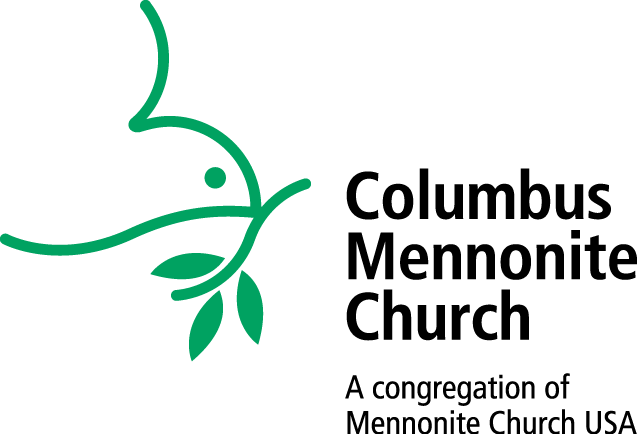Turning time into wine | February 10
https://joelssermons.files.wordpress.com/2019/02/20190210sermon.mp3
Isaiah 62:1-5; John 2:1-12
Here’s a bit of CMC trivia: In what official congregational document do these words appear: “Thus we pledge to allow sufficient time for work of the congregation and to involve ourselves, on a scheduled basis in the outreach of the congregation, realizing this may conflict with an already busy schedule.”
This is a bit of an unfair question because this is more of a formerly official document. A big clue is that we are currently working on revising our current version of this statement. Any takers?
This line comes from our original membership commitment statement, written in the early 60’s. It’s actually the last line of that statement. How interesting that when our founding mothers and fathers were naming the commitments they were making to one another as they formed this new congregation, they felt compelled to end by naming a key limiting factor in anyone’s commitment to any purposeful activity: time. We only have so much time. We commit, we pledge, we will, we also pledge…”realizing this may conflict with an already busy schedule.”
That very last part about busy schedules didn’t make it into the Revised Standard Version of the Membership Commitment from the 1990’s. Maybe Mennonites were less busy in the 90’s than they were in the 60’s, or maybe the busyness of life was such a given it didn’t seem worth mentioning.
In the next couple months we’ll be drafting the New Revised Standard Version of this statement – which may look very different than the first two. We’ll see if stewardship of our time gets named or if it’s assumed that everything we do has to do with time.
At least for today, we’re naming it.
Worship Commission has been kicking around the idea of a stewardship series for a little while. We’ve settled on a three…
Leaving, gleaning, giving | Coming of Age | Feb 3
https://joelssermons.files.wordpress.com/2019/02/20190203sermon.mp3
Text: Ruth
I want everyone to think back to when you were 11 or 12 years old. If you attach memories more to school grades, this would be sixth grade. If you’re not yet in sixth grade you can imagine a bit what it might be like.
Are we there? If sixth grade was not a highlight of your life, I apologize for taking you back there, but try to stick with it just a bit.
I want you to think about what it was like to be you at that time? Who were the key people in your life who loved you – family, friends, and teachers? What did you already know deep down that had always been there and has never left? What were you learning about yourself, about how life works?
This is a time of life so pivotal that cultures around the world have surrounded it with ritual. Maybe not exactly the same age across the board, but there is a near universal recognition of this sacred passage out of childhood, into an age of greater independence and responsibility. This Coming of Age service is our small way of ritualizing this passage from childhood into what we call adolescence – this in between period when you’re no longer a child, and not yet an adult.
This morning there are four of us for whom this time of life is neither a distant memory nor a future possibility. Henry, Lily, Graciela, and Owen are right at the threshold. Paxton is a fifth, and he was unable to be here today.
You have helped create and lead this service, and before we offer you our blessing, I want to reflect a bit about what this all might mean. We’ll do this through the story of Ruth. And, shameless plug to the adults, if…
Smells like Christ | Epiphany | January 6
https://joelssermons.files.wordpress.com/2019/01/20190106sermon.mp3
This sermon contains musical interludes and is best heard (above) rather than read. Many thanks to Tom Blosser (piano) and Jim Myers (clarinet), and to Rick Leonard for doing a first draft physics fact check, resulting in some editing that makes me sound like I know more than I do about such things.
Texts: Isaiah 60:1-6; Matthew 2:1-18
Sitting down a while back to plan this worship series, one of the tasks was assigning which sense would go with which week. Seeing and hearing could go anywhere, but when, exactly, in the Advent to Christmas to Epiphany plot is it time to taste, to touch, to smell? Fortunately, the texts help us out. It’s not every week frankincense and myrrh get hand delivered into the story line. And so, we finally arrive at the wafting wonder of Epiphany. A time to breathe in the fresh air of a new year. Do you smell what I smell?
Do You See What I See?
Matthew’s birth narrative has a distinctly different smell than Luke’s. Luke has the infant Jesus laid in a manger, a feed trough for animals. Do you smell what I smell? Mary and Joseph are soon joined by shepherds who’d been living with their sheep in the fields. There’s no room for them in the inn, so they share space with non-human creatures, and the mostly- domesticated humans who care for them – and the smells that emit from them.
Matthew speaks of educated foreigners – magi – meeting with royalty – Herod – on their way to visit the Messiah whose star they have seen. When they find him, he’s in a house, into which they bring their fragrant and valuable gifts.
If one were to have one’s eyes and ears swaddled around with strips of cloth, such that one could only…
Reflections on Touch | December 30s
Below are two reflections on Touch from CMC members within the Advent/Christmas theme “Do you sense what I sense?”
Megan Stauffer-Miller
Scriptures: 1 Samuel 2:26, Luke 2 :41-52
Clay: volcanic rock decomposed by reactions with water. Imagine holding these seemingly unrelated materials in your cupped hands… ROCK and WATER… for millennia. Time passes. You’re left with clay: pliable when wet, brittle when dry, strengthened or destroyed by exposure to extreme heat, vulnerable to unseen impurities, impenetrable (kind of), vessel of nourishment, agent of artistry.
This material, when it’s potential was discovered, propelled humanity in a new direction. It’s Biblical references are many and integral to our creation story. Humanity formed from the Heavens (Breath of God) and “dust of the ground”.
But these thoughts, these ideas are for the thinkers: theologians, artists, scientists, philosophers, those cerebral types. Sure, I listen to NPR, I’ll dabble in some heady conversation, but to be honest I’d rather just dig my hands into something. For some of you it may be helpful to know that I, as of this school year, am teaching high school Ceramics after teaching elementary Art for 17 years. My district is “economically disadvantaged” and minorities are the majority.
Picture a teenager you’re familiar with, hypothetically hold their hands in yours (awkward right?) pliable, brittle, strengthened or destroyed when exposed to extremes, vulnerable to unseen impurities, impenetrable (kind of), high energy, agents of creativity. A Ceramics classroom is the intersection of these commodities; “dust of the ground” and the “fountain of youth.”
If anyone from the Ohio Department of Education is here, the objective of my Ceramics I and II Course is: To create opportunities for students to interact with ceramics, their own and others, in an informed thoughtful manner. What that looks like in daily practice is: managing cell phones, new sneakers, dry skin, poverty, raging…
Elizabeth and Mary: A holy trimester | Advent 4
https://joelssermons.files.wordpress.com/2018/12/20181223Sermon.mp3
Texts: Luke 1:39-56
This sermon was accompanied with a violin playing “My soul cries out,” Sing the Story 124, and vocals singing “Taste and see,” Sing the Journey 86.
Three months ago we were at Camp Luz for fall retreat. After a heavy rain on Friday, it was a lovely weekend to be outside. As usual, we played, ate, sang, talked, and ate some more. Three of us rode our bikes the 100 miles from Westerville to Camp Luz, on the Ohio to Erie trail, rather proud of ourselves and a little surprised for having made it with no major problems. On Sunday Jim Leonard reflected on congregational life. Joe Mas and Linda Mercadante shared thoughts on hiking the Camino in Spain, a lifelong goal fulfilled, a pilgrimage. After the service, we cleaned up and headed home. Pulling out from Ravine Lodge, with my own and another bike strapped to the back of our minivan, I backed directly into a tree. It bent the front wheel of one bike, and the frame of my new road bike. After the somber 100 mile drive home, I took them both to the bike shop. Two days later we celebrated Ila’s sixth birthday.
That was three months ago.
A lot happens in three months. The weather has changed. An election has come and gone. We turn the calendar, people have birthdays and anniversaries. Kids get a little older and taller. Bikes get ridden, bent, fixed, and ridden again. Then suspended in the garage, waiting for warmer days.
Three months was also the length of our summer Sabbatical. I suppose a lot happened then, too, but the best part of a Sabbatical is what doesn’t happen. An extended time away from the normal routine. Time to rest, to restore, time to be intentionally unproductive. On Sabbatical, time is…

